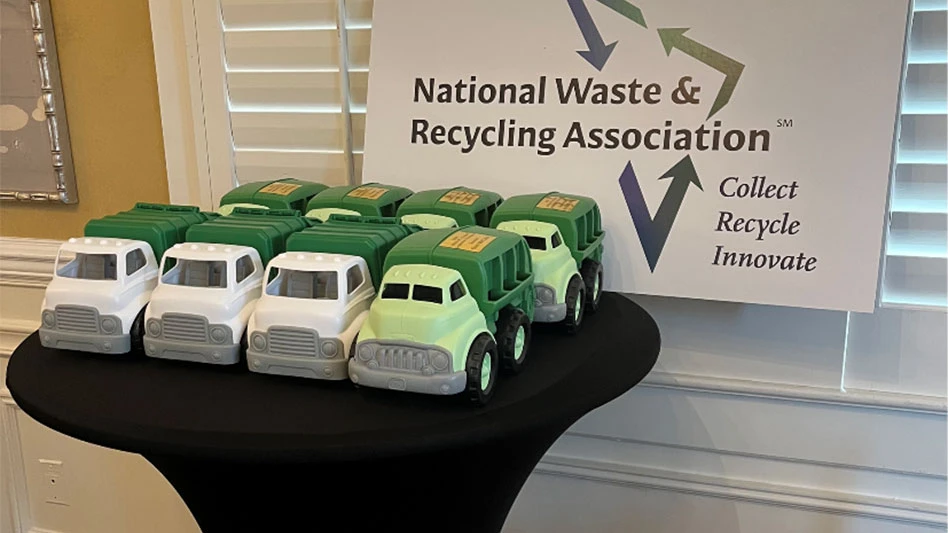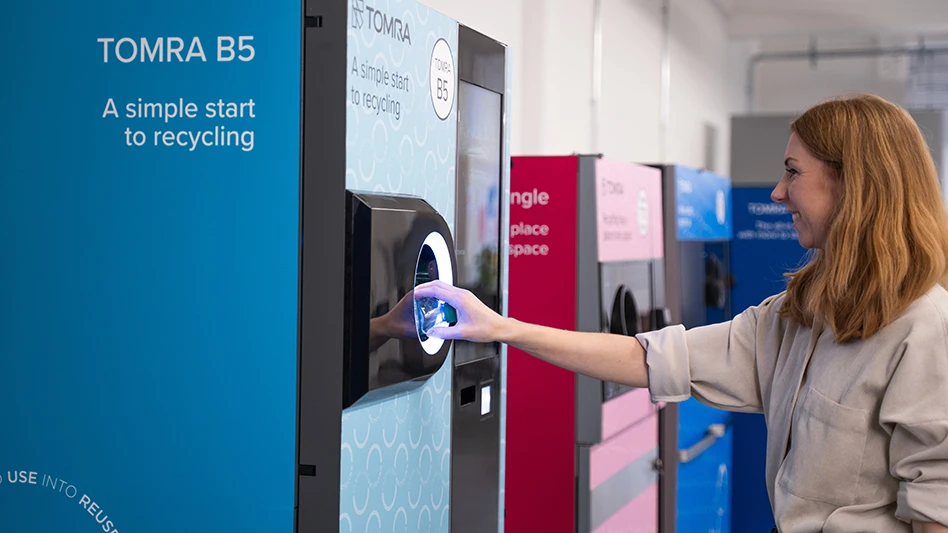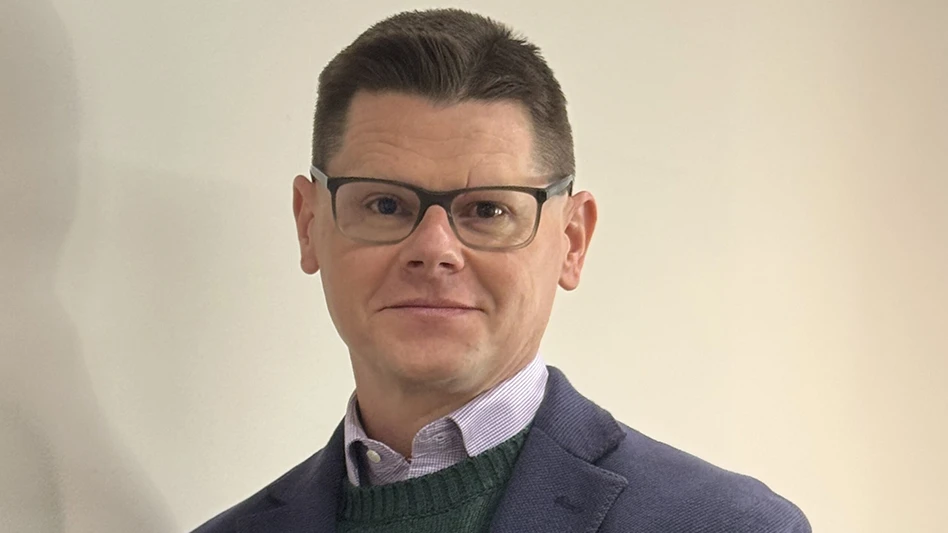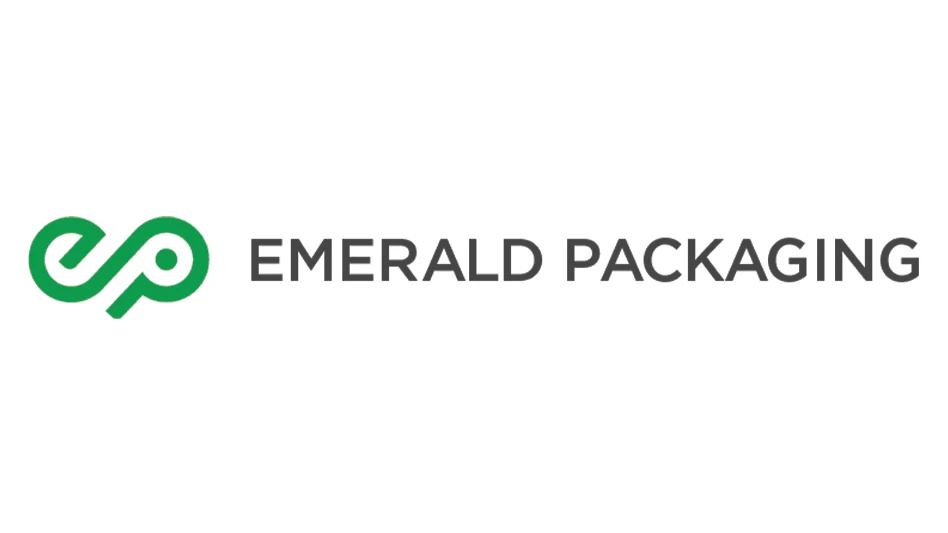
Photo by DeAnne Toto
Panelists shared their thoughts on sustainability in the aluminum sector and how recycled content contributes toward this goal in two panels during the S&P Aluminum Symposium, Jan. 26-28 in Fort Lauderdale, Florida.
“Sustainability is fundamental to the DNA of this industry," said Matt Meenan, vice president of external affairs at the Aluminum Association, Washington.
He said North American aluminum has a clear advantage in terms of its carbon footprint, which is 50 percent less compared with aluminum produced throughout the rest of the world. Low-carbon prime aluminum from Canada is an important part of the advantage North America has, he added.
From mine to metal
Shelley Ranii, director of global marketing at Alcoa, noted that the company was formed nearly 140 years ago and takes a long-term perspective because of that. The Pittsburgh-based company is a vertically integrated producer of bauxite, alumina and aluminum that operates smelters globally. She stressed the importance of looking from mine to metal to determine aluminum’s carbon intensity, adding that Alcoa produces the only low-carbon alumina and uses renewable energy at its smelters.
Duncan Pitchford, president and head of Commercial Americas, Hydro Aluminum Metals USA, emphasized Hydro’s commitment to sustainability, noting the market pull in Europe. While government policy has an impact on Hydro’s efforts in this area, he said the customer is the ultimate factor, with many making buying decisions based on product attributes related to sustainability, which goes beyond carbon accounting to include the company’s safety performance and how it interacts with indigenous people, for example.
Demand for low-carbon aluminum is well-established in Europe and growing in North America, Ranni said.
Affordable renewable energy
Meenan said two-thirds of the work needed to reduce the carbon footprint of aluminum will need to happen outside of the industry, as in the case of energy.
Ranni said 87 percent of Alcoa’s power comes from renewables. “We are looking at how we can repower in a sustainable way,” she added, noting the need for low-cost, competitive renewable energy in the U.S. “Having low-cost low-carbon energy is critical.”
What the Trump administration will do to provide that will unfold over the next 18 months, Ranni said. “But, clearly, not a lot is adding up today to get that in the U.S.”
Pitchford also views the availability and coast of renewable energy as an impediment to decarbonizing the aluminum industry in the U.S. “Government could have a role to play here to enable more production of low-carbon material in the U.S.,” he said.
Differentiating prime and obsolete scrap
While government policy can help, Pitchford said, “Policy can get it wrong, too,” citing challenges with the way CBAM, or the Carbon Border Adjustment Mechanism, is structured in Europe. “It can create disastrous knock-on effects that cripple the industry that you’re trying to help.”
Ranni said CBAM treats prime scrap the same as obsolete scrap in terms of carbon content, “and that is one of the issues.”
A low-carbon premium
Ranni argued in favor of a premium for low-carbon aluminum. “If there’s no differentiation, it’s difficult for companies to invest to decarbonize,” she said, mentioning Alcoa’s work on Elysis, technology that uses an inert anode to make aluminum. “That investment is huge,” she said. “We need to see that there is some value as part of the alternative,” suggesting 1 percent more per ton likely would work.
“We’re cheerleaders for Elysis,” Pitchford said. “We look forward to that technology coming to the market because that enables the industry to meet this [goal].”
He said Hydro is also working on HalZero, a new smelting process based on converting alumina to aluminum chloride prior to electrolysis, with chlorine and carbon remaining in a closed loop, eliminating emissions of CO2 and emitting oxygen instead. The company also is considering carbon capture and other ways to get carbon out of the process, with Pitchford noting that all these innovations, even on the recycling side, require investments.
To improve the sustainability of the aluminum industry, advancements will need to be made in a number of areas, Ranni said, not just in increasing recycled content. She said not enough scrap is available, so low-carbon primary aluminum must role to play as well.
Pitchford agreed, saying it also will be important to find the right homes for scrap from an alloy standpoint.
Recycled content
Michael Hamm, North American strategy manager at Constellium, said many factors influence scrap use, including economics, customer requirements and the markets a company is selling into. “It really depends on how much do your customers value that recycled content.”
Noveliswants to have 75 percent recycled content in its aluminum by 2030 and reduce its carbon emissions to less than 3 metric tons of CO2 per metric ton of aluminum shipped, said Gary Tucci, senior director, metal operations, for the Atlanta-based aluminum recycling and rolling company. To get there, the company is investing in landfill diversion, increasing storage capacity, making technology upgrades, increasing scrap buying and administrative support and forming partnerships. “We’re working deeper and closer with suppliers,” he said. “We’ve made progress over the years, but we still have a ways to go.”
One such partnership is with Sortera Technologies, an Indiana-based company that is deploying artificial intelligence, image/data analytics and advanced sensors to sort mixed aluminum scrap streams.
RELATED: Sortera Technologies ‘owning and operating’ aluminum sorting plants
Ben Pope, senior vice president, operations, at Sortera, said “Upcycling scrap is going to provide the value we need to have that competitive aluminum industry.” He added, “We're planning to disrupt the current value chain by sorting mixed materials, creating high-volume, high-quality packages that aren't available today. And we won't be alone. There's many other people trying to do the same thing, and the demand will pull that through one way or the other; the right technology will win.”
He said Sortera is making 380 cast packages, 319 cast packages and 356 cast packages from end-of-life, mixed twitch material. “We can basically allow secondary smellers to be more efficient. Some die casters that have remelt capability, they can directly charge our products.”
Pope added that Sortera is creating a 3105 extrusion wrought package that also can be blended with used beverage cans (UBC) to produce can stock.
“If we want to change our industry, it takes all of us coming together. I need cast consumers to want sorted cast, just like I need wrought players like Gary and others that want broad packages. Both parties have to come together, or this won't work,” he said. Pope also noted that the value structure is going will be disrupted as a result. “The margins you're used to will change.”
Tucci said Novelis will have to do things differently than it has in the past to reach its recycled-content goals, including consuming dirtier forms of scrap and different types of scraps. “I think we're going to have to really think out of the box and be willing to try different things. And that's going to tax some of our current recycling assets that aren't set up for these different types of scraps.”
He added, “We've taken a lot dirtier UBC in our can casting facilities the past six months that we have in the past.”
Meenan said it is important to improve the recycling rate for aluminum cans as less than half of the cans consumed in the U.S. are recycled, which equates to throwing $1 billion to $2 billion in value away. He said discussions are happening in legislatures at the state level regarding recycling. “That’s where [legislation] is going to live for the foreseeable future.”
Hamm mentioned the low UBC recycling rate as well, noting that more than half of the UBCs recycled in the United States come from the 10 states that have deposit legislation.
“The problem is there hasn't been a new deposit system in the continental U.S. since the ’80s,” he said. “So one of the things we're working on now with the Aluminum Association and can manufacture is to develop—we're partnering with not just aluminum; we're working with PET, we're working with glass [and] working with brand owners— … to implement our version of a that is EPR [extended producer responsibility] and DRS [deposit return system] combined because we've seen more success in the EPR side. There's been five new systems passed over the past few years.”
Whether to restrict scrap exports
Regarding whether restrictions on scrap exports are needed to keep scrap within the U.S., Hamm suggested a better understanding of what scrap grades are being exported is needed. “If you look at the census data on what's being exported, there's massive errors,” he said, adding that the Aluminum Association couldn't post the UBC recycling rate because the export data was incorrect. “If I'm not mistaken, the initial value for UBC exports in 2023 was over a billion pounds. And then after all the corrections, it got down to like two 50 million—something in that area. That's a huge error, and that's just one segment of aluminum scrap. So, I think before you start banning exports, you probably need to fix that problem.”
Pope said he’d like to see a quota system instituted “to make sure we understand where we're letting the value go as an industry.”
He continued, “I think you could have quotas on high-volume scrap types. So maybe we say zorba can only export X thousands of tons a month,” with operators near the coasts the ones best positioned to export. “But if I were to level set the room with the demand that's coming online and the amount of Zorba that's created, if we just sorted it, we would be at equilibrium in the United States, so there would be no need for export, and we could probably have a lower-cost, more competitive aluminum products market than any time in history in the United States.”
Latest from Recycling Today
- Proposed bill would provide ‘regulatory clarity’ for chemical recycling
- Alberta Ag-Plastic pilot program continues, expands with renewed funding
- ReMA urges open intra-North American scrap trade
- Axium awarded by regional organization
- China to introduce steel export quotas
- Thyssenkrupp idles capacity in Europe
- Phoenix Technologies closes Ohio rPET facility
- EPA selects 2 governments in Pennsylvania to receive recycling, waste grants





